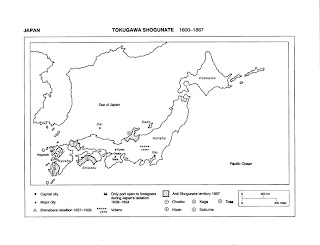

The Battle of Sekigahara, 1600, Japanese feudal lords divided into two camps, resulted in the victory of the Tokugawa family.
Tokugawa Ienasu
Shogun
The Tokugawa Bakufu
The Sankinkotai: yearly imperial festivities celebrated in the capital Edo (today Tokyo) where all the daimyos were also invited, a mechanism of controlling the feudal lords and weakening them financially.
A peculiar instance of feudalism where the Tokugawa family managed to establish some kind of a centralized control over the feudal lords, the daimyos.
The samurais were the military ruling elite. They were the warriors as well as the unquestioned rulers of the land. Besides their status as warriors, they also had judicial powers, thus they were also the kadıs. Moreover, the samurai legally had the right to kill, so for instance when a samurai was humiliated in a way by a lay person, he had the right to kill him right on the spot.
Tokugawa's policy of isolation – sakoku. The Christian missionaries were banned from entering the Tokugawa domain and the ones who were inside were simply killed. It was only the Dutch that had access to trade with Japan, and that was mainly because the Dutch were Protestant which meant they weren't loyal to the Pope and thus they could provide the shogunate the intelligence about the Western world.